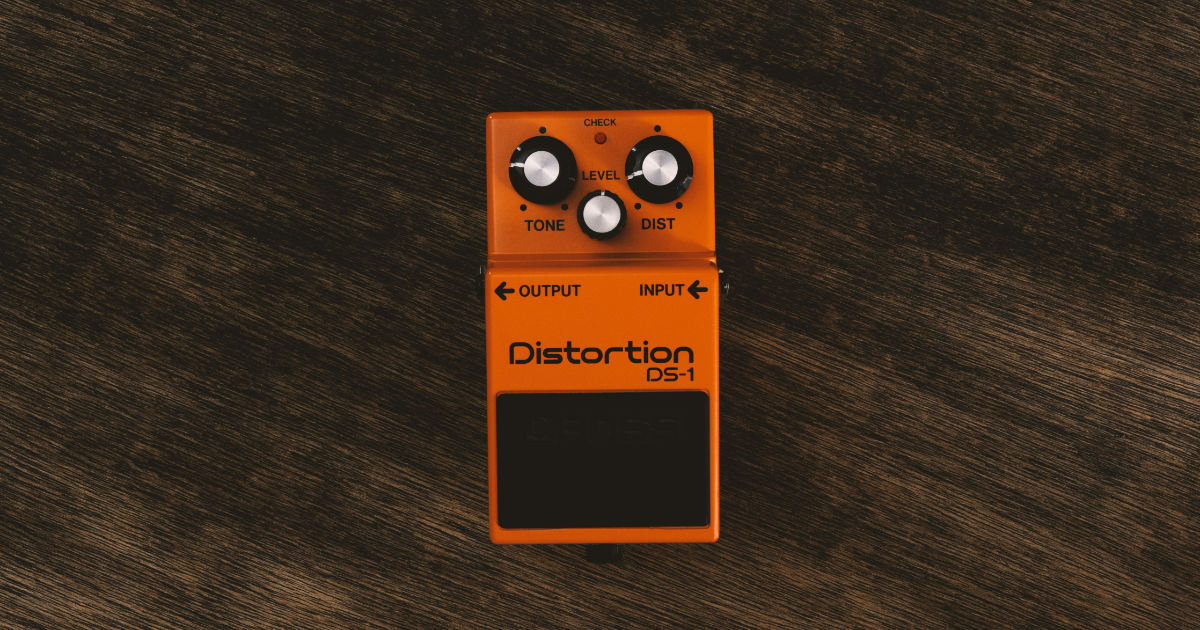Estimated reading time: 6 minutes
An answer to the question “what is distortion?” would probably start with something like “a deviation from the original form”… but that sounds a bit too scientific, right? Let’s move closer to our area of interest.
“Distortion happens when a signal goes past the maximum volume capacity” would be an answer summarized in words that are more plain. Rock fans would say “it’s the thing that makes guitars sound cool” (and they would not be wrong).
After asking the question “what is distortion?” to a few people, we figured out that in a simple explanation – it is pushing a signal above the maximum threshold, called clipping.
When we push a signal above our device’s maximum, the transients will be squashed, up until the point that our waveform looks like a square wave.
The question after “what is distortion?” would be “is distortion bad?” and there it gets more complicated. Anyone who listened to modern music with guitars would say distortion is awesome! On the other hand, anyone who dealt with old, faulty or low quality audio equipment would consider that a stupid question, because the answer is yes. And a music producer would just say that it depends. Now it sounds complicated, right? Let’s make it simple.
Types of distortion
Further figuring out what distortion is, we first have to make some separations, starting with: wanted and unwanted distortion. Pretty self-explanatory – think a good guitar pedal vs. a broken speaker.
Now, what is distortion and what are the types of wanted (deliberate) distortion, now it gets fun!
First off, we have clipping – the process of turning a sine wave into a square wave. And it sounds horrendous if used wrong. This type of distortion is the closest to overdriving a piece of equipment that is not designed to be overdriven. Harsh and gritty, clipping is to be handled with extreme care, although in (very) small amounts it can add some loudness, attitude and help cut through the mix.
You will find distortion also as a more narrow term. It will be subtler and less aggressive than clipping. Also, its use can be more liberal and wide. Think rock guitars, and we love rock guitars, right?
Overdrive is a type of distortion that is inspired by pushing (or overdriving) amps that were designed to be overdriven, and it is fairly mild – adding some push, overtones and aggression to the sound.
When you ask someone what is distortion, they will think. When you ask them what is saturation they will probably smile! Tube and tape saturation are very widely used and loved, because they are pretty delicate types of distortion. Also, they mostly add some smoothing, compression and very pleasant additional harmonics. Logically, modeled on tube and tape devices, respectively, they mimic the sound we love.
Bit crushing and sample rate reduction are forms of digital distortion, where the sound is purposefully degraded. Lowering the bit depth or sample rate will remove some of the sound’s information and make it retro, edgy and lo-fi.
- How to Become a Music Producer? The Ultimate Blueprint to Becoming a Music Producer
The use of distortion in music production
So, what is distortion and why/how do we use it? As said, depending on the type, distortion affects sound in different ways. Some harsher ones will add grit, attitude and aggression. Other mellow ones will smooth things out, make the sound pleasant and rounded. Some will work anywhere between.
But what is distortion used for in mixing? Firstly, to get some more loudness out of your audio. Shaving off the peaks leaves room for the “body” of the signal to be louder in general. Distortion can also be used to increase the perceived loudness of a sound, since it will pop out and seem louder to our brains. In this sense, distortion is like compression, but (much) faster.
Right after it, distortion is used to make the sound fuller and help it cut through. Overdrive, saturation and distortion will all add harmonics to the sound, making it fuller and richer. What do you do when you cannot hear something and it won’t cut through the mix? You reach for EQ and compression! But keep in mind and try it out, distortion can also be very effective and pleasant here.
Of course, distortion can be used to shape a sound in a certain way. Connect it to a style (rock, lo-fi etc.) or an era (using certain types of tape or tube saturation defines that pretty well).
Conclusion
In the end, what is distortion used for changes as you grow as a producer. You will find much more uses, much more nuances and more tricks with time. You will also develop both your ears and your taste as the time passes.. So just dive in and start creating!
Now that we’ve discussed what distortion is, it’s time to move on to the best distortion plugins.
FAQ
Distortion is pushing a signal above the maximum threshold, called clipping. In other words: Distortion happens when a signal goes past the maximum volume capacity.
It depends on whether the distortion is wanted or unwanted, or whether the distortion is used specifically and in a genre-typical manner. Examples of this are modern rock guitar parts or wanted overdriven kick drums in the techno gabber genre.
The different types of distortion are clipping, overdrive, tube and tape saturation as well as bit crushing and sample rate reduction (what are digital forms of distortion).
